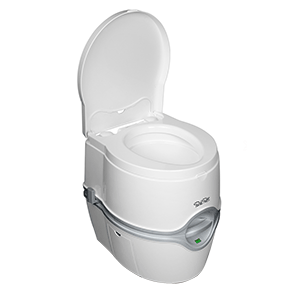Marine Plumbing and Ventilation Guide
Marine Plumbing and Ventilation: Ensuring Efficient Systems and Comfort on the Water
Introduction
Marine plumbing and ventilation systems are essential for maintaining comfort, hygiene, and overall functionality on boats. Proper design, installation, and maintenance of these systems are crucial for efficient operation and the well-being of those on board. In this comprehensive guide, we will explore the key components of marine plumbing and ventilation, best practices for installation and maintenance, and tips for troubleshooting common issues.Plumbing Systems
Freshwater Systems
Freshwater systems provide potable water for various onboard needs, such as drinking, cooking, and sanitation. Consider the following components and practices:- Water Tanks: Choose food-grade water tanks made from materials that resist contamination and do not affect water taste.
- Pumps and Pressure Systems: Install reliable pumps and pressure systems to ensure consistent water flow throughout the boat.
- Faucets and Fixtures: Select marine-grade faucets and fixtures that are resistant to corrosion and designed for compact spaces.
- Hoses and Connectors: Use drinking-water-safe hoses and connectors that are resistant to kinking and contamination.
Waste Management Systems
Proper waste management systems are crucial for maintaining cleanliness and environmental responsibility. Key components include:- Toilets: Choose marine toilets that are specifically designed for marine environments and meet regulatory requirements.
- Holding Tanks: Install adequate holding tanks for the collection and storage of waste. Comply with local regulations for discharge or pump-out procedures.
- Macerator Pumps: Use macerator pumps to break down waste before it is discharged overboard or pumped out.
Bilge and Sump Systems
Bilge and sump systems are responsible for collecting and removing excess water from the boat. Consider the following:- Bilge Pumps: Install automatic bilge pumps with float switches to detect and remove water from the bilge area.
- Bilge Alarms: Consider installing bilge alarms to provide early warning of water accumulation in the bilge.
- Sump Pumps: Use sump pumps to remove water from areas such as the engine compartment or shower sump.
Ventilation Systems
Proper ventilation is essential for maintaining a healthy and comfortable onboard environment. Key considerations include:- Natural Ventilation: Utilize hatches, windows, and vents to allow for natural airflow throughout the boat.
- Mechanical Ventilation: Install fans or blowers in areas prone to high humidity, such as the galley, head, or engine compartment.
- Ducting and Ventilation Paths: Ensure proper ducting and ventilation paths to facilitate the movement of air and prevent moisture buildup.
Maintenance and Troubleshooting
Plumbing System Maintenance
To maintain efficient plumbing systems:- Regularly inspect all plumbing connections for leaks, cracks, or signs of wear.
- Flush and clean freshwater tanks regularly to prevent the buildup of sediment or contaminants.
- Test and operate all valves and pumps periodically to ensure proper functioning.
- Monitor holding tank levels and pump out as necessary to prevent overfilling or odors.
Ventilation System Maintenance
To ensure effective ventilation systems:- Clean and remove any obstructions from vents, ducts, and fans.
- Inspect and replace filters as needed to maintain proper airflow.
- Monitor humidity levels and use dehumidifiers or moisture-absorbing products as necessary.
- Check fan and blower motors for proper operation and lubricate as recommended by the manufacturer.
Troubleshooting Common Issues
Low water pressure in the freshwater system
Low water pressure may be caused by a clogged filter, a malfunctioning pump, or an airlock in the system. Check and clean the filter, inspect the pump for proper operation, and bleed any air from the system to restore water pressure.Foul odors from the holding tank
Foul odors may indicate a problem with the holding tank or ventilation system. Ensure proper ventilation to prevent odors from entering the living spaces, and use recommended holding tank treatments to control odors and promote breakdown of waste.Excessive moisture or condensation
Excessive moisture or condensation can lead to mold, mildew, and discomfort. Improve ventilation, use dehumidifiers or moisture-absorbing products, and ensure proper insulation to control moisture levels.
Marine Plumbing and Ventilation FAQ




















